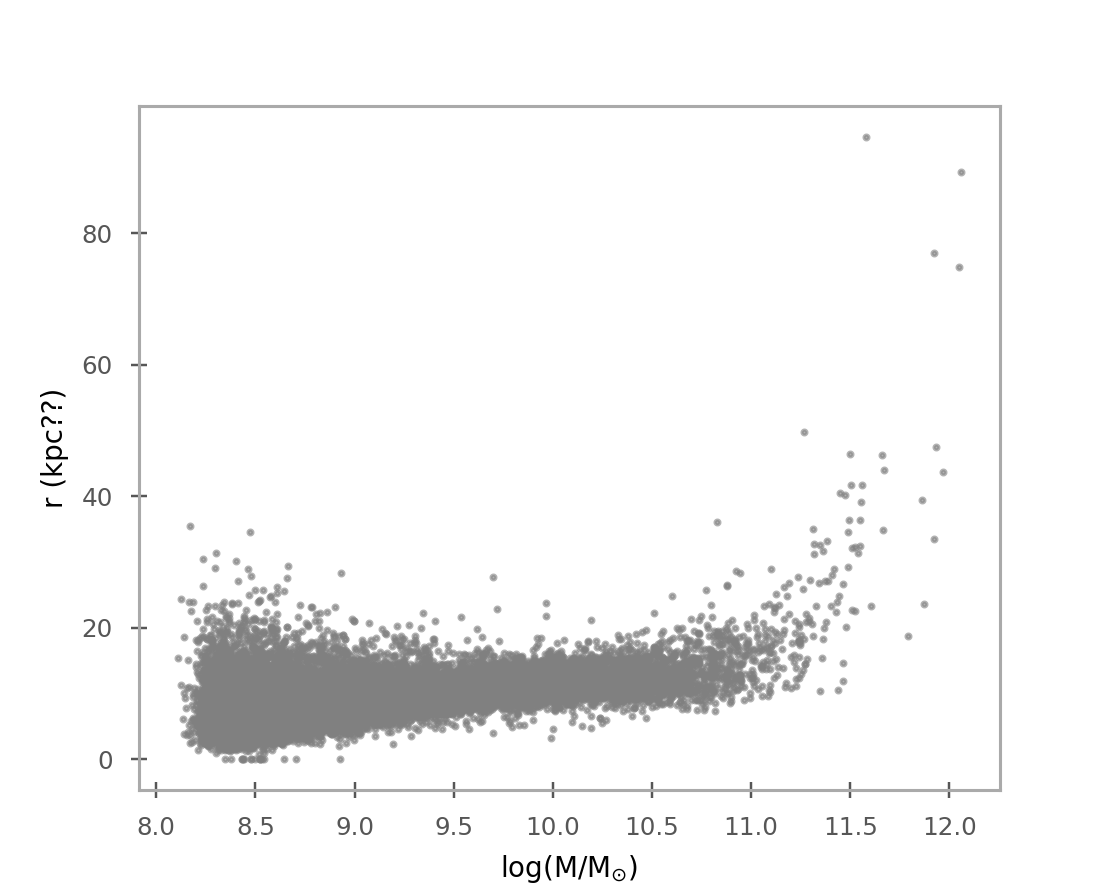I'm new to simulations and I'm having some difficulties in understanding some data.
I have checked some properties for the subhalos, like the stellar mass vs velocity dispersion and everything looks fine.
However, when looking at the radius I find some strange values. For the radius I use the SubhaloHalfmassRadType[4], divide by h=0.67 and multiply by a=1 (I'm working at z=0). These should be in kpc units now, right? The problem is that the plot of radius vs stellar mass looks weird. Not only are there low-massive galaxies with a radius larger than giants but also the shape of the relation radius-mass is weird. Is there anything that I'm doing wrong? Or is this a problem due to the low particle resolution of low-mass galaxies?
Depending on if you are working with TNG100 or TNG50, you compare to the same plots in Genel+2018 or Pillepich+2019.
(Your plot looks OK, it would be good to draw the running median line to check).
Jorge Romero Gómez
7 Jun '23
Thank you for the answer.
I am currently using TNG300, so I am wondering if I switch to TNG50 which has a better resolution, will the radius be smaller?? Or with better resolution I only have more particles, but the radius should be similar?
Dylan Nelson
7 Jun '23
You can find a resolution convergence study of sizes in Pillepich+2019 linked above. (TNG300-1 resolution is similar to TNG50-3)
Hey!
I'm new to simulations and I'm having some difficulties in understanding some data.
I have checked some properties for the subhalos, like the stellar mass vs velocity dispersion and everything looks fine.
However, when looking at the radius I find some strange values. For the radius I use the SubhaloHalfmassRadType[4], divide by h=0.67 and multiply by a=1 (I'm working at z=0). These should be in kpc units now, right? The problem is that the plot of radius vs stellar mass looks weird. Not only are there low-massive galaxies with a radius larger than giants but also the shape of the relation radius-mass is weird. Is there anything that I'm doing wrong? Or is this a problem due to the low particle resolution of low-mass galaxies?
Thank you very much for the help!!

Depending on if you are working with TNG100 or TNG50, you compare to the same plots in Genel+2018 or Pillepich+2019.
(Your plot looks OK, it would be good to draw the running median line to check).
Thank you for the answer.
I am currently using TNG300, so I am wondering if I switch to TNG50 which has a better resolution, will the radius be smaller?? Or with better resolution I only have more particles, but the radius should be similar?
You can find a resolution convergence study of sizes in Pillepich+2019 linked above. (TNG300-1 resolution is similar to TNG50-3)